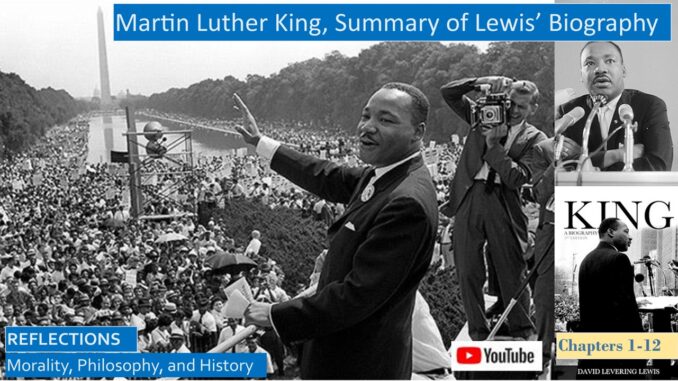
Today we will reflect on the life of Martin Luther King as told by David Levering Lewis in his classic biography.
Martin Luther King sincerely sought to follow Mahatma Gandhi’s example by staging nonviolent protests, even when provoked. Many local jurisdictions made protesting illegal, often hundreds of protesters were arrested. Several times the civil rights organizations petitioned the federal courts to overrule localities trying to stifle protests, which the Bill of Rights protects under Freedom of Assembly. Unfortunately, as militants became more influential, violent protests, even riots, erupted in many cities, souring many whites on the Civil Rights struggle.
What struck me was how violently the KKK and the white supremacists opposed civil rights and voting rights for blacks. Twice King family houses were bombed, dozens of black homes and churches were bombed, once during Sunday school, many blacks were murdered, many were beaten both by police and protesters.
The Civil Rights Era was near the dawn of the television age. What distinguished Martin Luther King from prior generations of black leaders is he was the first celebrity civil rights leader. Now when southern Sheriffs sicced their dogs and drew their clubs on protesters, everyone in America could see the blood and watch the violence in real time on their living room television sets. Martin Luther King was also a spellbinding orator, he was great television.
YouTube script which includes more book links: https://www.slideshare.net/slideshows/martin-luther-king-summary-of-biography-by-david-levering-lewis/265986317
YouTube video for this blog: https://youtu.be/XtdVGx2C3Cc
BIOGRAPHY OF MARTIN LUTHER KING
Martin Luther King, Youth and Schooling, Lewis’ Biography Chapters, 1 and 2
https://seekingvirtueandwisdom.com/martin-luther-king-youth-and-schooling-lewis-biography-chapters-1-and-2/
https://youtu.be/_64FMZ6AlEg
Martin Luther King was born in Atlanta, a city that had a large black professional class, which included ministers like his father and grandfather. His family was known for their involvement with civil rights, his maternal grandfather was one of the charter members of the local NAACP chapter. He helped defeat a local bond issue that did not fund any new black schools and advocated building Booker T Washington High School, the first black secondary school in Atlanta.
His family was known for their involvement with civil rights. His maternal grandfather was one of the charter members of the local NAACP chapter and advocated building Booker T Washington High School, the first black school in Atlanta for secondary education.
Unlike other smaller Southern cities, there was a sizable black professional class in Atlanta, including professors, businessmen, insurance executives, and professionals like doctors, dentists, and morticians.
Like WEB Du Bois, he discovered that his white playmates distanced themselves from him once they started advancing in school. The parents of two of his white playmates forbade them to associate with him when they were old enough to attend elementary school.
Martin Luther King and Rosa Parks, Montgomery Bus Boycott, Lewis’ Biography, Chapter 3
https://seekingvirtueandwisdom.com/martin-luther-king-and-rosa-parks-montgomery-bus-boycott-lewis-biography-chapter-3/
https://youtu.be/TuiyFycWE-U
As a young minister graduating from a prestigious seminary, Martin Luther King was honored by his calling to be the minister of the renowned Dexter Avenue Baptist Church, a prestigious colored church in Atlanta, Georgia in early 1954.
But in December 1955, during the busy Christmas season, after a long day at work, during some nasty weather, a courageous, courteous, and unassuming black lady broke both the law and Southern etiquette by refusing to give up her seat to a white passenger and move to the back of the bus. The police were called, and they arrested Mrs Rosa Parks.
In response, the local NAACP chapter and local black ministers organized the Montgomery Bus Boycott that lasted over a year. They selected Martin Luther King to lead the boycott. Carpools were organized to ferry black workers to their jobs.
Why did this bus boycott succeed when so many past protests had been futile? Martin Luther King was a great orator, he was great television. But the other key factor that enabled the Civil Rights protests to succeed was the Supreme Court decision in 1954, Brown v Board of Education, which desegregated public schools, signaling the court’s willingness to advance civil rights causes. Federal judges, affirmed by the Supreme Court, ruled that buses could no longer be segregated.
In response to the desegregation of the buses, violence erupted, “a black teenage girl was beaten, a pregnant woman was shot.” Homes and churches were dynamited, and four black Baptist churches were destroyed. But five white men were found guilty of these bombings by a white jury, which was one of the first times that whites were found guilty of grave crimes against blacks by white juries in the Deep South.
Martin Luther King, Lunch Counters, Freedom Riders, and Albany, Lewis’ Biography Chapters 4-6
https://seekingvirtueandwisdom.com/martin-luther-king-lunch-counters-freedom-riders-and-albany-lewis-biography-chapters-4-6/
https://youtu.be/_TLt2fQqL4w
After the successes and struggles in the Montgomery Bus Boycott, a regional conference formed the SCLC, or the Southern Christian Leadership Conference. Martin Luther King was elected President, and Rev Ralph Abernathy was elected Treasurer.
In that era, blacks were not permitted to eat lunch with white customers at lunch counters in department and variety stores. In 1960 college students, black and white, protested in North Carolina by sitting at lunch counters, and if they were not served, they would simply stay to protest. These sit-ins spread to Atlanta and thirteen other cities in five states across the Deep South.
To organize the student protest movement nationally, the SCLC provided the initial funding to found the independent SNCC, or Student Nonviolent Coordinating Committee. The future Congressman John Lewis was selected to be the leader of SNCC.
SNCC issued a student manifesto, An Appeal for Human Rights, that demanded “community action in education, housing, jobs, voting, law enforcement, hospitals, and entertainment facilities, including restaurants, movies, and concerts.”
FREEDOM RIDERS CHALLENGE SEGREGATION
In 1961, Freedom Rides were organized where black and white students and activists rode interstate buses to challenge segregation. Martin Luther King, Ralph Abernathy, and the SCLC participated in the protests.
The first two buses carrying the Freedom black and white protesters boarded in Washington DC, bound for Alabama. One bus was set on fire by angry whites. When the other bus reached Birmingham, Alabama, the Freedom Riders were beaten severely by white thugs while Bull Conner and the police looked on, and while the television cameras rolled.
When another group of Freedom Riders departing from Tennessee arrived in Montgomery, Alabama, they were initially threatened by a mob of three hundred angry whites, which swelled to nearly a thousand. John Lewis of the SNCC, a future congressman, a leading journalist, and a special White House representative were among those injured in the ensuing violence. While the mobs rioted, the television cameras continued to roll, and public opinion shifted. Hundreds of protesters, including Martin Luther King, were arrested.
In September 1961, the ICC, or Interstate Commerce Commission, abolished segregation aboard buses and terminal facilities, including bus stations.
Violence erupted in response to these protests. The Ku Klux Klan then dynamited four black churches in nearby towns, destroying or heavily damaging them.
Martin Luther King, Birmingham, Nonviolent Protests v Bombs and Brutality, Biography Chapter 7
https://seekingvirtueandwisdom.com/martin-luther-king-birmingham-nonviolent-protests-v-bombs-and-brutality-biography-chapter-7/
https://youtu.be/5y0v0tYMdy8
Birmingham, a major center of iron and steel in the South, was one of the toughest cities in Alabama, and Bull Connor was the ideal white supremacist villain. The SCLC trained hundreds of volunteers in a civil rights boot camp, teaching them the basics of how to conduct a nonviolent campaign. They were warned that they might face violence and possibly death.
Bull Connor had been Commissioner of Public Safety for several decades, off and on. He was notoriously vigilant and cruel. Lewis notes that in Birmingham, “segregation was total and the slightest betrayal of discontent with the racial order was severely, often capitally, punished. Police brutality to blacks was the custom rather than the exception.” “Of the 80,000 registered voters in 1963, only 10,000 were black. When desegregation was mandated, “they closed the city’s parks rather than allow blacks to sully them.” “Whites still sipped water from designated fountains and tried on clothing in fitting rooms” for whites only. Blacks were intimidated by the bombing of seventeen black churches in 1963.
Martin spoke at a packed prayer meeting. “We are heading for freedom land, and nothing is going to stop us. We are going to make Birmingham the center of antidiscrimination activity in the nation. I have come here to stay until something is done.”
Seeing the television cameras roll, Bull Connor’s men behaved civilly for three days of the demonstrations, anticipating that the local court would issue an injunction forbidding future protests.
When this injunction was issued, there was a panic. Martin Luther King and Ralph Abernathy decided to go to prison as a form of protest, along with fifty other volunteers. Martin was placed in solitary confinement, without access to a phone, without access to his attorney.
With all contact cut off, this was the most pressing question: Was Martin Luther King alive? Or had he been lynched? On Easter Sunday, Coretta Scott King, his wife, placed a call to the White House asking if they could inquire into this. The Attorney General, Robert Kennedy, called her and told her, though he was not able to arrange for her husband to call her, that he was indeed safe. On Monday morning, the President, John F Kennedy, called her to say she would be expecting a call from her husband and that FBI agents were on the scene in Birmingham.
This controversy prompted eight white Birmingham pastors, scandalized by the movement’s breaking the unjust laws preventing demonstrations and the militancy of the black leaders and clergy, to issue an Appeal for Law and Order and Common Sense. In response, Martin Luther King wrote his famous Letter from the Birmingham Jail, which forcefully contended that blacks had been patient enough for decades, that the time is NOW for positive racial change.
What was the message from Martin Luther King’s Letter From a Birmingham Jail? “Every Negro was familiar with the cry of ‘WAIT!’ It nearly always meant ‘NEVER.’” He proclaimed that NOW was the time to demand civil rights for blacks.
Comparing MLK’s Letter from Birmingham Jail with Hannah Arendt’s Banality of Evil in Nazi Germany
http://www.seekingvirtueandwisdom.com/comparing-martin-luther-kings-letter-from-the-birmingham-jail-with-hannah-arendts-the-banality-of-evil/
https://youtu.be/PqFAUEXbi8k
Sensing an impasse, Martin Luther King and Ralph Abernathy accepted release on bail in late April. When tried a week later, they were fined fifty dollars and five days loss of liberty.
SCHOOL CHILDREN MARCH IN PROTEST
This was good television, but they needed better television. They launched the most controversial tactic of all. Six thousand children, aged six to sixteen, marched and protested from the Sixteenth Street Baptist Church to downtown. A thousand children were arrested. Up to now, Bull Conner showed restraint for television, but for some reason, he decided to brutalize these children.
Lewis recounts the rising violence. Two fire hoses “were dislodged by their water pressure and rocketed into a group of policemen; one officer’s ribs and another’s legs were crushed. Connor’s men were no longer attempting to control the crowds. They had been ordered to drive them brutally into the black section of the city. It was not surprising that nonviolent discipline collapsed under naked provocation. A hail of rocks, bottles, and brickbats showered the police and firemen.”
Lewis notes that later that month, “the US Supreme Court’s decision legalizing sit-in demonstrations in cities enforcing segregation nullified the Alabama laws under which the large majority of Birmingham’s demonstrators could be prosecuted.”
In addition, the Alabama Supreme Court ruled that the current administration, including Bull Connor, should relinquish their position. They had lost the last election but had sought to retain power through a technicality in the city charter.
Lewis recounts, “On Thursday morning, the white negotiators agreed to the essential demands of the black community. Lunch counters, restrooms, fitting rooms, and drinking fountains in the large downtown stores were to be desegregated.” “Similarly, the hiring and promotion of black personnel was to take place over the next sixty days.” “The nearly three thousand persons arrested were to be released immediately.”
VIOLENCE CONTINUES IN BIRMINGHAM
But the violence did not cease. Martin’s brother’s house was demolished by a bomb, though miraculously he, his wife, and his children were not harmed. A motel used by SCLC leaders was partially destroyed by a bomb. The rioting continued.
But four months later, in September 1963, the KKK detonated dynamite under the stairs of the 16th Street Baptist Church in Birmingham during Sunday School, killing four young black girls, including Addie Mae, Cynthia, Carole, and Denise, ages eleven to fourteen, and injuring several dozen others. A white jury eventually convicted several of the perpetrators for murder.
John F Kennedy said this to the American people in his television address: “One hundred years of delay have passed since President Lincoln freed the slaves, yet their heirs, their grandsons, are not fully free. They are not yet freed from the bonds of injustice.”
Martin Luther King, I Have a Dream Speech, March on Washington DC, Biography Chapter 8
https://seekingvirtueandwisdom.com/martin-luther-king-i-have-a-dream-speech-march-on-washington-dc-biography-chapter-8/
https://youtu.be/IJ64y3nQA4Q
Next was the March on Washington and Martin Luther King’s famous “I Have a Dream” speech in front of the Lincoln Memorial, heard by 250,000 participants. Before the speeches, they were entertained by many star performers, including Joan Baez, John Dylan, and Peter, and Paul and Mary.
We reflected on this short and remarkable speech, which drew from the Declaration of Independence and the Emancipation Proclamation, which ended with the I Have a Dream refrains.
MLK peered into the future: “I Have a Dream that one day on the red hills of Georgia, the sons of former slaves and the sons of former slave owners will be able to sit down together at the table of brotherhood.”
MLK proclaimed: “I Have a Dream that my four little children will one day live in a nation where they will not be judged by the color of their skin but by the content of their character.”
A few months later, in November, President John F Kennedy was assassinated in his motorcade in Dallas, Texas.
When Lyndon Johnson became President, he used the momentum from the March on Washington and the assassination of John F Kennedy to pass the Civil Rights Act of 1964.
Martin Luther King, Bloody Struggles in Mississippi and Selma, Lewis’ Biography Chapters 8-9
https://seekingvirtueandwisdom.com/martin-luther-king-bloody-struggles-in-mississippi-and-selma-lewis-biography-chapters-8-9/
https://youtu.be/eMA_7vLYcdM
Next was an unsuccessful struggle to battle segregation in the small racist city of St Augustine, Florida, and then their efforts to register black voters and protest for Civil Rights in Mississippi and in Selma, Alabama.
In the Freedom Summer of 1964, many enthusiastic white, and a few black, college students traveled to Mississippi to assist in voter registration efforts, which was risky, because in many small towns blacks who attempted to register to vote were sometimes lynched.
Three volunteers, one black and two white Jews, disappeared when returning from registering voters in Mississippi. Their car was found, they were not. Federal authorities became involved: LBJ ordered Navy divers to search the canals of Mississippi for bodies. They found one body, then another, then another, of blacks who had been lynched, but none were the bodies of the three students. Finally, an informant came forward to tell them where they had been buried alive with a backhoe.
The full horrifying story is in our Yale Lecture Notes.
American Civil Rights History: Yale Lecture Notes
http://www.seekingvirtueandwisdom.com/american-civil-rights-history-yale-lecture-notes/
https://youtu.be/GQesHoV5IdI
Tensions mounted as Martin Luther King swooped in from out of town. Martin was encouraging voter registration and was planning a massive nonviolent demonstration in Selma, Alabama.
Selma was deeply segregated. Although blacks narrowly outnumbered whites in Selma, Alabama, only one percent of the registered voters were black. Sheriff Jim Clark was the Bull Connor of Selma, firmly determined to preserve white supremacy.
The newly elected Progressive Mayor of Selma, Joseph Smitherman, was supported by white businessmen who sought to attract Northern industry by toning down racial issues. He appointed Wilson Baker as Chief of Police to undermine the authority of Jim Clark.
The SCLC chose to concentrate on Selma to end barriers to voter registration. Hundreds of protesters were carted in police wagons to jail by Sheriff Clark, enraging Chief of Police Baker. The brutality of Jim Clark, like that of Bull Conner, ensured great television.
Martin Luther King and Ralph Abernathy led a giant demonstration towards the courthouse, they and a thousand others were arrested in two days. As in Birmingham, many of these demonstrators were schoolchildren.
There were many brutal incidents, police shot several protesters, one died from his wounds. On a Sunday afternoon, five hundred disciplined nonviolent marchers attempted to march from their church in Selma to Montgomery to present demands for greater civil rights. Sheriff Jim Clark ordered the marchers to disperse. When they refused, the police attacked.
Our biographer Lewis recounts, “First, there was gas, then the posse on horseback galloped into the swarm of fleeing blacks with cattle prods and they flailed their clubs like maniacs. The marchers were driven back across the bridge and into the houses” of brave friends. John Lewis, with a fractured skull, and Hosea Williams “led many of the protesters back to the church. At one point, some blacks retaliated, hurling rocks and bricks at the police, even forcing Clark and his men to momentarily retreat.”
Jim Clark and his men were preparing for more retaliatory violence when Wilson Baker intervened. Defusing the situation, he persuaded the marchers to retreat into the church, and talked Jim Clark into withdrawing his men. Baker likely saved many lives that day.
“In Atlanta, Martin was stunned.” He promised he would return to Selma on Tuesday to lead another march. On Monday morning, a federal Judge issued an injunction forbidding the march. For the first time, Martin prepared to defy a federal injunction.
Lewis described this moment in history: “The scenario was perfect: intractable segregation in a small Southern city, courageous black common folk demanding their overdue minimal rights, and police officers whose every sadistic act reified the demonology of the South.” In short, this was great television, many who watched television that night would see images seared into their memory they would never forget.
Lyndon Johnson pleaded with the officials of the SCLC to call off the Tuesday march. Martin Luther King threatened to march to Montgomery, but few of the marchers had prepared for the long march. The marchers crossed the bridge, encountering a line of state troopers, who ordered the marchers to halt. Martin was granted permission for them to kneel and pray. When they stood up, the troopers moved to the shoulders of the road, apparently so they could pass. But then Martin led the marchers back to the church.
Meanwhile, President Lyndon Johnson took advantage of the Selma crisis to push through new legislation. President Johnson presented his Voting Rights Act before Congress in prime time on national television. He addressed the American people: “I speak tonight for the dignity of man and the destiny of democracy.” “At times history and fate meet at a single time in a single place to shape a turning point in man’s unending search for freedom.” “So it was a century ago at Appomattox,” where the Civil War ended, “and so it was in Selma, Alabama.”
FINAL MARCH FROM SELMA TO MONTGOMERY
The SCLC lawyers petitioned the federal court to allow another march from Selma to finally reach Montgomery. Two days after Lyndon Johnson’s speech, federal “Judge Johnson authorized the Selma to Montgomery march, specifically enjoining Sheriff Jim Clark, Governor George Wallace,” “and other state officials from interfering with it.” Judge Johnson’s order only allowed three hundred to march the distance. Four thousand federal troops and many FBI agents were also dispatched. This final peaceful five-day march to Montgomery was great television.
The actions of white supremacists helped ensure the passage of the voting rights bill. Three houses were dynamited, and several bombs at the mayor’s house were disabled. Most tragic was the death of a white Detroit mother and housewife who had volunteered to drive protesters home to Selma from Montgomery. As she was driving to Selma, white thugs drove up beside her and shot her in the head, killing her.
Martin Luther King & LBJ: Great Society, Vietnam, Chicago & Memphis, Lewis Biography Chapters 10-12
https://seekingvirtueandwisdom.com/martin-luther-king-lbj-great-society-and-vietnam-northern-civil-rights-biography-chapters-10-12/
https://youtu.be/IeKssG8mrlk
Our biographer Lewis lists the main issues that Martin Luther King and the SCLC were considering as they expanded their civil rights campaigns to include Northern cities:
Main issues for Martin Luther King and the SCLC:
- “The growing conviction among whites that the blacks, with federal backing, were moving too rapidly.
- The fierce objections by black militants that racial progress had not only been too slow but was being subtly manipulated by powerful whites.
- Practical programs to deal with urban and Northern black poverty.”
- Whether the military spending on the War in Vietnam was hampering funding for civil rights programs.
The problem was that although combatting urban black poverty was the more important battle, these were not simple battles, they did not make for good television like the dramatic protests in places like Birmingham and Selma, where there were snarling dogs, fire hoses, and villainous Southern state troopers with clubs and ominous sunglasses. What was unique about the large Northern cities were the multistory substandard housing projects that dwarfed anything in the South.
In addition to protesting for Civil Rights, Martin Luther King felt compelled to join the protests over the unpopular Vietnam War. But the SCLC voted, at first, that Martin could publicly only express his opposition to the war as a private citizen, not as an officer representing the SCLC. Martin’s opposition to the war muddled his civil rights message and distracted from his efforts.
Two weeks later, rioting and looting erupted in Harlem, where white merchants and police were assaulted. LBJ immediately conferred with the leading civil rights activists, chief among them was Martin Luther King, who traveled to New York City, where black leaders issued a statement condemning the rioting, asking that demonstrations be suspended until after the November election. This was followed by large-scale rioting in Los Angeles, California.
The administration had passed a billion-dollar program to fight poverty, but these sums barely touched the problems of pervasive poverty.
Lewis notes: “Of Chicago’s 3.5 million people” in 1964 “nearly one million are black, and almost half of these are impoverished. Of those who are not, not many are well above the poverty line. And the overwhelming majority are concentrated in the appalling residential slums on the city’s south and west sides.”
Martin rented an apartment in Chicago to publicize the substandard housing, but his wife Coretta could not stand the stench of urine. But Chicago differed from the Southern states in that the boss of Chicago, Richard Daley, was not a white supremacist, and was willing to not only confer with the civil rights leaders, but also tried to steal their thunder with pronouncements of new city programs to defuse whatever protests they planned. Chicago was not good television.
SANITATION WORKERS STRIKE IN MEMPHIS
In Memphis, “two black garbage crewmen were crushed to death when the automatic compressor of their truck was accidentally triggered.” Angry workers in Memphis voted to strike in February. Meanwhile, sanitation workers in New York City went on strike for wage increases and additional benefits.
Walter Reuther of the AFL-CIO offered material assistance to their Memphis Local, but Mayor Loeb, whose election had been opposed by eighty percent of black voters, refused both to recognize the union and refused to sign a written contract to end the strike.
This was a simpler contest more suited to the confrontational nonviolent protests that Martin Luther King and the SCLC preferred. Many blacks welcomed his swooping down to assist in Memphis, but that did not include many of the young militant blacks in Memphis. The youth organization Invaders declared, “If you expect honkies to get the message, you got to break some windows.”
Then the nation was stunned when Lyndon Johnson announced that he did not plan to run for reelection as President. But this also meant that he now had a freer hand in pursuing Civil Rights legislation.
A nonviolent protest was planned in Memphis. Over six thousand nonviolent protesters began the peaceful march, but when they heard the sound of glass breaking, Martin and the nonviolent protesters retreated back to the church or went home. The militant protesters continued with what was now a riot, in the melee the police shot a teenage black. Fifty people were injured and over a hundred were arrested, though property damage was largely limited to broken windows and the looting of window display cases.
Martin Luther King announced immediately that another march, far better organized, was planned for that Friday. He persuaded the Invaders to participate in a nonviolent protest. But a federal court issued an injunction against further demonstrations, backed up by a Justice Department Attorney.
Martin Luther King did not defy the federal injunction forbidding further Memphis demonstrations planned for Friday. On Thursday evening, Martin was standing on the balcony of his Memphis motel with Ralph Abernathy and other associates. Across the street, James Earl Ray carefully pulled the trigger of his Remington rifle.
AFTERMATH OF ASSASSINATION OF MARTIN LUTHER KING
What was the immediate aftermath of the assassination of Martin Luther King? While he was publicizing the economic and housing plight of the Negro, President Lyndon Johnson was shepherding further Civil Rights legislation through Congress. Martin Luther King was assassinated on April 4, and then the Civil Rights Act of 1968 was signed by Lyndon Johnson on April 11. Included in that legislation was the Fair Housing Act that forbade racial or any other form of discrimination when dwellings are rented or sold. Hate crimes were addressed, and federal protections for voting, schooling, and employment were strengthened. This legislation did address some of the issues Martin Luther King had publicized in his protests in Chicago.
Massive riots in more than a dozen cities erupted after the assassination of Martin Luther King. These riots persisted for years, off an on. In her biography on LBJ, Kearns writes that after Lyndon Johnson “canvassed the opinion in Congress,” he was “convinced that the riots had destroyed whatever sense of injustice, compassion or guilt King’s death had produced; that the country was in no mood for progressive words on race.”
That November the Republican Richard Nixon won an overwhelming landslide victory in the 1968 Presidential Election. But Democrats retained a healthy margin in both the House and the Senate, though many Southern Democratic Congressmen were not enthusiastic supporters of Civil Rights.[1]
DISCUSSING THE SOURCES
The author, David Levering Lewis, was planning to write the biography of Martin Luther King when he was assassinated. It was initially published sixteen months later and quickly became the classic biography of this Civil Rights icon.
Likewise, Doris Kearn’s Lyndon Johnson, The American Dream is part autobiography, since a major source were her notes of his extensive comments while she was a guest at his Texas ranch. We discussed these biographies in greater depth in our reflection on Martin’s youth and school years and our reflection of his closing years.
We are planning reflections on Doris Kearns biography of LBJ and how he was able to shepherd effective Civil Rights legislation through Congress. Doris Kearns Goodwin will release in April 2024 An Unfinished Love Story from her and her late husband’s notes on the momentous Sixties, including the Great Society programs and the Vietnam War.
We are also planning reflections on Thurgood Marshall’s legal attacks on segregation, voting rights, and discrimination as lead counsel of the NAACP, whose litigation led to the Supreme Court’s Brown v Board of Education decision, which enabled Martin Luther King to fight for Civil Rights.
DETAILED FOOTNOTES ARE IN DETAILED REFLECTIONS
[1] David Levering Lewis, KING, a Biography (Chicago, Illinois, University of Illinois Press, 2013, 1970), and Doris Kearns, Lyndon Johnson and the American Dream (New York: Signet Book, Harper and Row, 1976).

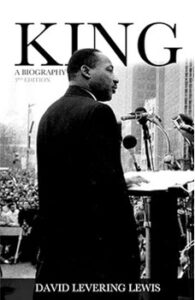
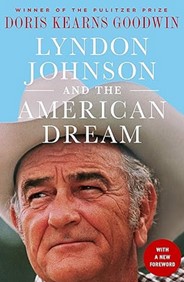
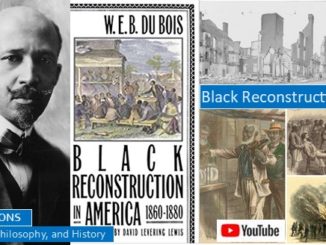
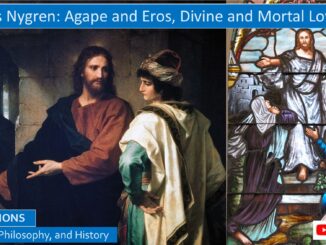
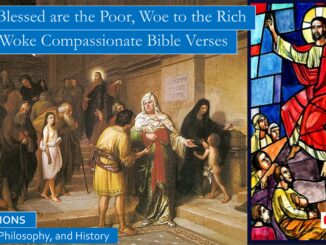
1 Trackback / Pingback